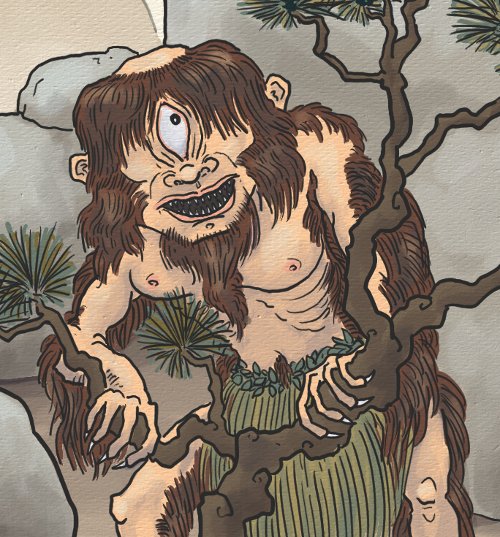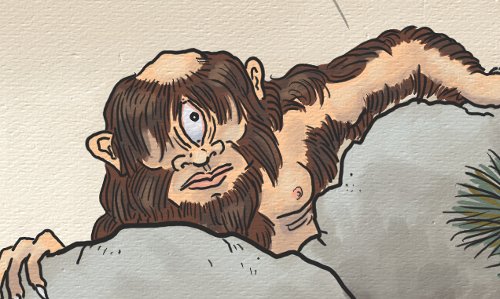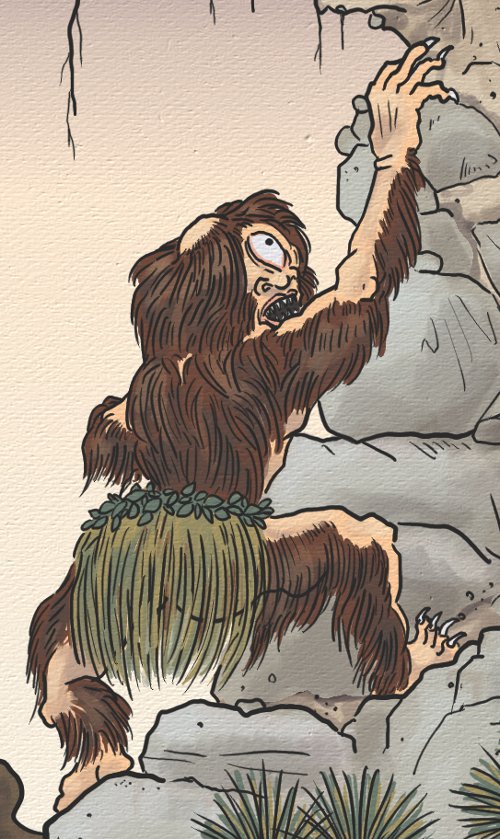For many weeks now I’ve been alluding to a project I am working on, but I didn’t want to go into too much detail until I reached a certain point in the project. I’ve finally reached that point, and I am excited to announce my Very-Big-Project-That-Until-Now-I-Couldn’t-Talk-About-And-Is-The-Reason-Why-I-Haven’t-Posted-Much-Art-On-My-Website-This-Year!
I am making a book about yokai! It will be an illustrated field guide to yokai, and it will also other supernatural Japanese beasties. It will be fully illustrated, full color, and choc-a-block full of awesome information about these creatures, which I have been researching for a long time now. The book is tentatively titled The Night Parade of One Hundred Demons, which as you may know was the title of one of yokai master Toriyama Sekien’s yokai anthologies. One hundred, so yes, there will be 100 yokai in this book. In fact, a little more than that. And that means 100 full-page, color illustrations! There will be text and descriptions accompanying each yokai, but the main focus of the book will be the artwork. I am hoping to make this the most comprehensive and the most beautiful collection of yokai ever published in English. Some of the images will be cute, some will be grotesque. I am trying to present the yokai as they are described in tales, rather than in contemporary popular culture. That means there is some violence, some sex, and so on. It won’t be a kid’s book, but it won’t be rated R either.
I spent the entire first quarter of this year collecting stories from books, the internet, and (the most fun part) native Japanese who remember the stories from when they were children, translating them into English, and trimming them down to single-page tidbits that give a nice overview of each yokai. The 2nd quarter of the year was spent drawing, designing, and doing layout for the book, until I had a fairly complete working manuscript. Now, that the third quarter is starting, I am starting the biggest part of this project: painting all of the pictures!
You’ll see some similarities between this project and my A-Yokai-A-Day series, including many of the yokai. Almost all of the yokai I’ve presented on this website will be in the book, with new illustrations accompanying them (as you can see with the Kappa below). Of course, I haven’t shown nearly 100 yokai on this site, so you will get to see a large number more yokai that most people have never seen or heard of before (including many of the Japanese people I have talked to). Later on I will post a list of all the yokai included in the book.
In a few more weeks I will also be launching a Kickstarter funding project to help with the cost of publishing it (not to mention to cost and time involved in making it). There will be a number of patronage levels, starting from $1 on upwards, each one with specific rewards as a way to say thank you for your support. In the meantime, I will be posting updates on the book here on my blog, and on my Facebook page.
For now, here is a little preview of what the interior art will look like. The Kappa, one of Japan’s most famous and most loved yokai. I said there would be some blood, and here is a good example. The Kappa, while one of Japan’s favorite yokai, especially among children, is not at all the cute little rapscallion that most people know him as. In older folklore, they hunt and eat humans, rape women, and murder horses and cattle. Their favorite food is raw, bloody, human anuses. So be careful!

Kappa
And some up-close details of the artwork:

Kappa detail 1

Kappa detail 2

Kappa detail 3
I hope you enjoy these! And stay tuned for more updates on this book, especially for the Kickstarter project! I guarantee it will be worth becoming a patron of this project! 🙂



















